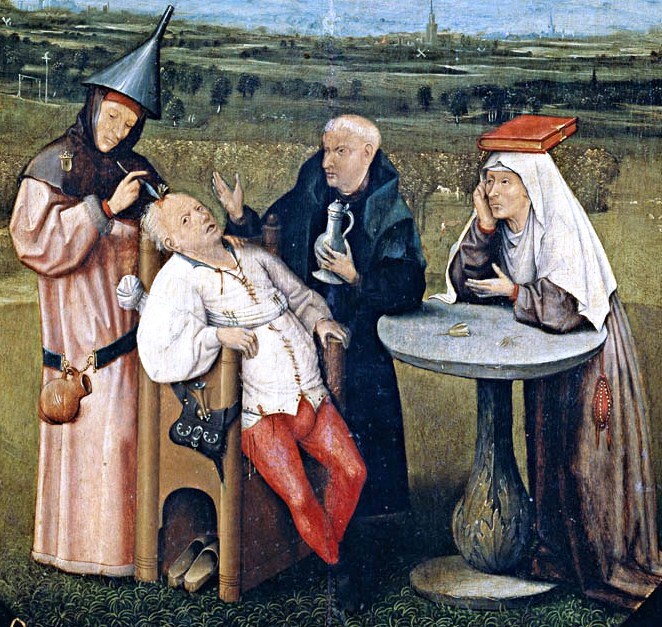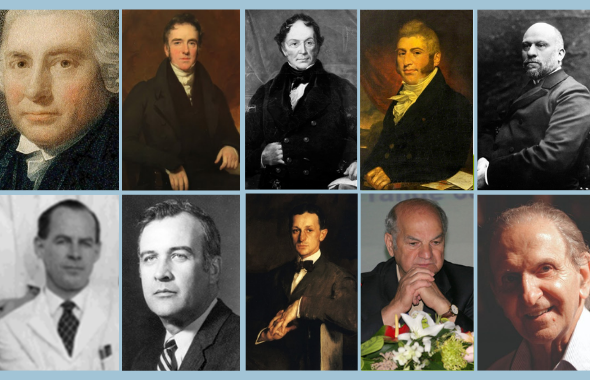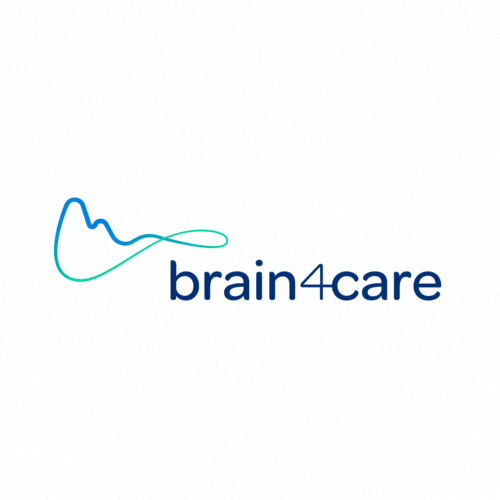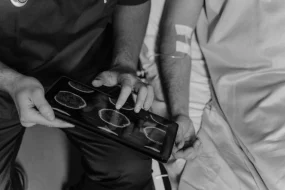
Results led to an acceptance to a Brazilian researcher for an oral presentation at the 2021 AANS Annual Scientific Meeting
Brazilian researcher Nicollas Nunes Rabelo, a collaborator at the Neurology Department of the School of Medicine of the University of São Paulo, has drawn a panorama of the historical evolution of brain research carried out around the world. The result was the publication of the article “The historic evolution of intracranial pressure and cerebrospinal fluid pulse pressure concepts: Two centuries of challenges“.
In his article, Rabelo argues that the current knowledge of intracranial pressure (ICP) and cerebrospinal fluid pulse pressure (CSFPP) was built on more than two centuries of research on brain dynamics. Today there is a consensus on the importance of monitoring intracranial pressure during neurosurgery, which helps to reduce mortality during procedures. However, understanding intracranial dynamics requires understanding a historical construct
“Our current knowledge is the result of two centuries of research that began with the investigations of Alexander Monro (Secundus)”, highlights Rabelo.
For more than 200 years, anatomists and physiologists have investigated brain dynamics in order to understand how intracranial volumes affect ICP and also the behavior of the cerebrospinal fluid (CSF) pulse at different pressure stages.
Invasive and non-invasive monitoring techniques depended on the evolution of anatomical and physiological concepts. In science, many statements that are taken as true change over time because the understanding of certain issues improves.
“Today, less invasive monitoring is a global trend”, he comments.
“As a surgeon, my tendency is to make smaller cuts, with less surgery time and less anesthesia. This is the trend in the world, including seeing and monitoring at a better cost and effectiveness”, the researcher adds.
Nicollas Rabelo’s article reports several findings that have contributed to the current knowledge of intracranial dynamics and the use of CSF pulse pressure [CSF] in the interpretation of intracranial dynamics.
“Science starts in philosophy: when I have questions, I’m within the scope of science. The word Medicine comes from Mederi, which meant ‘knowing the best way’. In other words, it is the art of searching”, states Rabelo.
“So, when we seek this information, we foster the knowledge bases for further knowledge. We do many researches that focus on treating diseases, but this historical article promotes the theoretical load for them, which is of fundamental importance”, highlights Rabelo.
The brains who have researched the brain — the anatomists and physiologists who helped clarify intracranial volume patterns

Through documentary research, Rabelo reports the contributions of important paragons in Medicine such as Alexander Monro secundus (1733-1817), George Kellie (1770-1829), former student of Monro secundus, George Burrows (1771–1846), John Abercrombie (1780-1844), Angelo Mosso (1846–1910), Edgar Bering Jr. (1917-1994), Thomas Langfitt (1927-2005), Harvey Cushing (1869-1939), Anthony Marmarou (1934 – 2010) and Sérgio Mascarenhas de Oliveira (1928 – 2021), who have left their marks in the history of Medicine.
“The Monro-Kellie doctrine was an important step in the renewal of this history, which is reconstructed in the article. According to the doctrine, it was possible to understand the behavior of intracranial volumes and investigate new pressure parameters, such as CSFPP. But understanding intracranial dynamics is a task of historical construction, therefore it is perpetually unfinished, since its construction is still ongoing, day by day, breaking concepts and breaking paradigms, always in search of innovation”, highlights Rabelo.
For him, the knowledge built in each research is helpful for the development of current and future research. “When we know the historical difficulties, we are able to improve the way of overcoming the existing difficulties, which is why the Americans values history so much. Our idea with the article was also to value the Brazilian work, carving out the name of prof. Sérgio Mascarenhas de Oliveira in literature”, he says.
AANS Annual Scientific Meeting — an important meeting hosted by the American Association of Neurological Surgeons
The publication of the article has earned the author an invitation to an oral presentation at the 2021 AANS Annual Scientific Meeting, a major conference promoted by the American Association of Neurological Surgeons. The event will take place in Orlando and accepts in-person and online participation.
However, the oral presentation can only be made in person. As Rabelo will be in Brazil, he will not be able to participate in the meeting.
Trajectory — the path taken by researcher Nicollas Rabelo
Graduated in Medicine from UniAtenas, Paracatu (MG), Dr. Nicollas Rabelo has a Residency in Neurosurgery at Hospital Santa Casa de Ribeirão Preto and Specialization in Neurointensivism for Adults at Hospital Sírio Libanês.
Rabelo was approved in 2nd place for the Exchange Program between the International Neuroscience (INI) Institute Hannover (Germany) and the Brazilian Academy of Neurosurgery. He is a Full Member of the Brazilian Academy of Neurosurgery (ABNC) and a Full Member of the Brazilian Society of Neurosurgery (SBN).
He holds a PhD in Vascular Neurosurgery from the Department of Neurology of the USP Medical School (2018-2022), having researched on vascular neurosurgery diseases and periodontal disease as a rupture factor for cerebral aneurysm.





